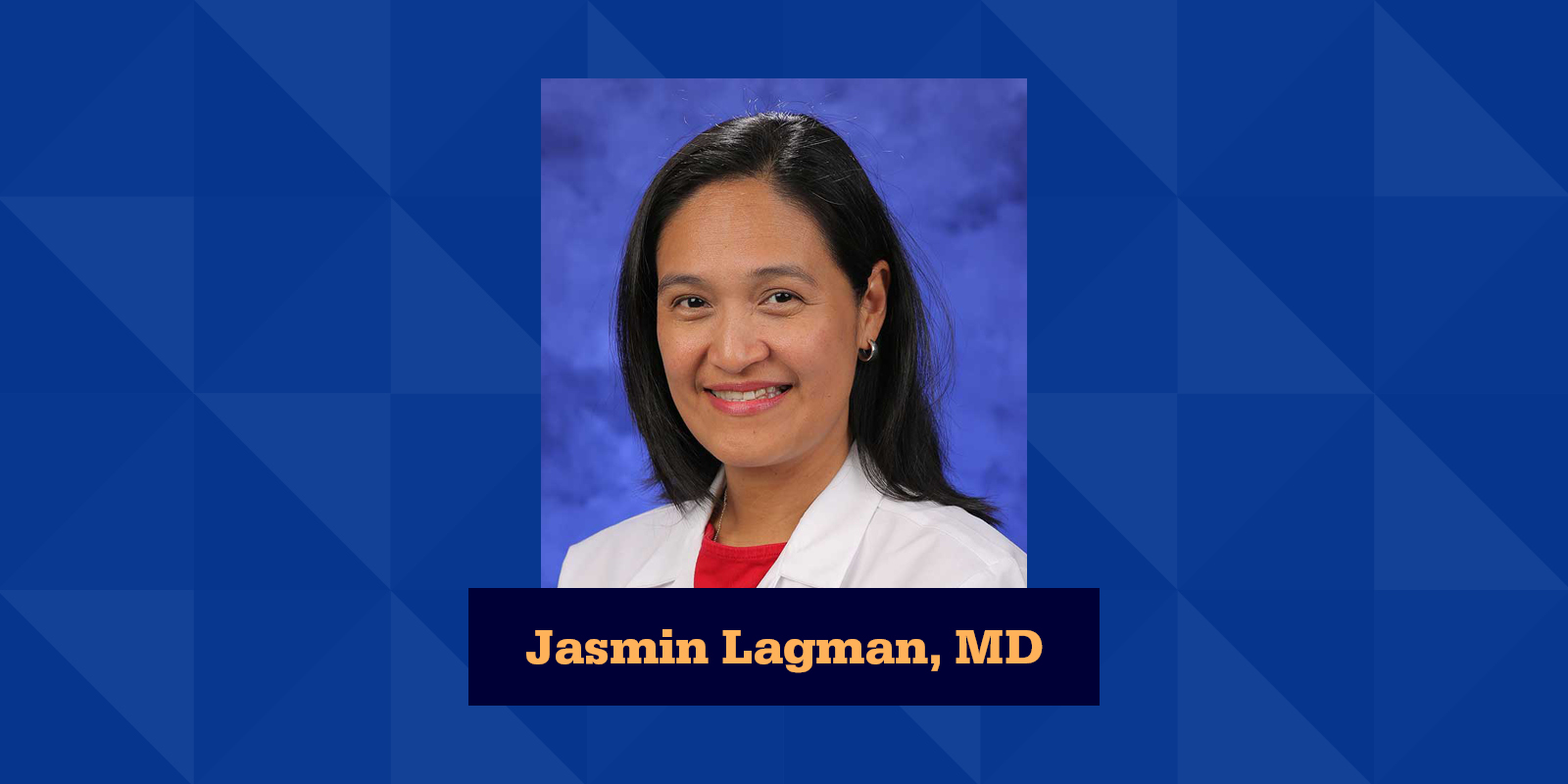May is Asian American and Pacific Islander Heritage (AAPI) Month. A month for celebrating and recognizing the contributions and influence of Asian and Pacific Americans to the history, culture and achievements of the United States. Pennsylvania Psychiatric Institute (PPI) celebrates our Asian patients and staff, by committing to learning more about them each year.
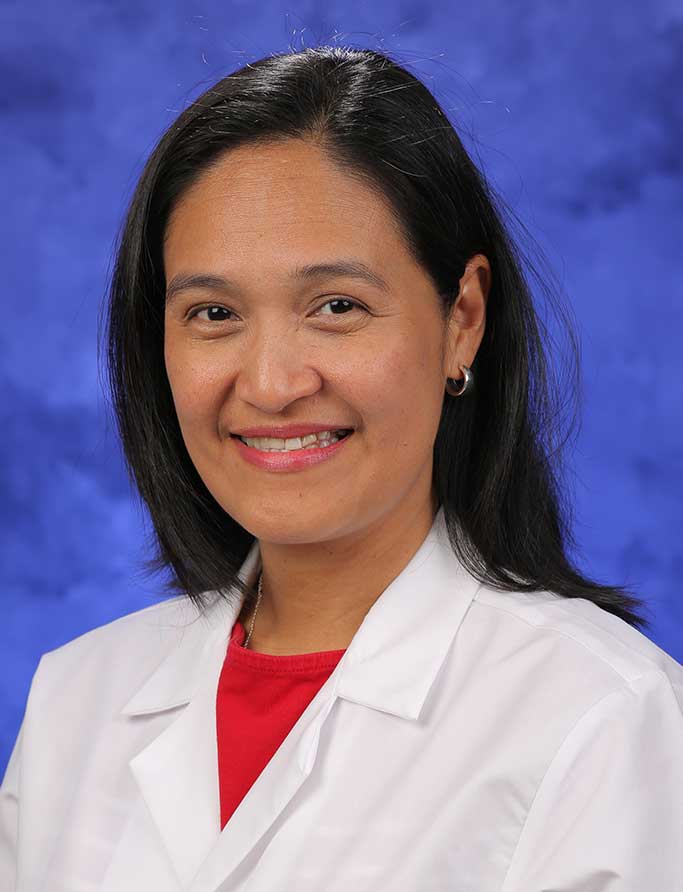
You may have seen the smiling face of Jasmin Lagman, MD, around the halls of PPI. As a Child and Adolescent Psychiatrist and Assistant Professor at Penn State, we have asked Dr. Lagman to share about her Filipino background and culture.
Dr. Lagman grew up in the Visayas region of the Philippines where she went through college, medical school, and three years of pediatric residency before moving to the U.S. Before meeting her husband, she always thought she would return to her hometown to practice. “I came to the U.S. for love,” Dr. Lagman explained. “My husband, who was also born and raised in the Philippines, had been living in Philadelphia since 1990. It just happened to work out that I was accepted to residency in Philly five years after arriving to the U.S.” Three years of psychiatry residency and two years of a child and adolescent psychiatry fellowship later, Dr. Lagman joined the team at PPI in 2018.
Coming from honest means, hard work and determination brought her to where she is today. “Many parents/grandparents worked hard to provide a good education for their children as student loans do not exist in the Philippines. We rely on scholarships and hard work. I had to travel to a different island for schooling,” explains Dr. Lagman. “Thankfully today more universities and schools exist, and availability of education is better, although the bigger universities remain in bigger cities.” As a first-generation immigrant, Dr. Lagman still has a strong connection with her Filipino culture.
Filipinos were in fact the first Asians to migrate to the U.S. in the 1500s as slaves under Spanish colonization. It wouldn’t be until 1800, that the first Japanese, and then Chinese immigrants would arrive (in 1869).
The Philippines is made up of over 7,000 islands with over 120 languages. Dr. Lagman speaks Hiligaynon and Tagalog – which was integrated with others to create the national language, Filipino. “People will speak their native tongues at home or speak the Filipino language to understand each other around the country. English is taught as soon as kids start going to school and both the Filipino language and English are the official languages in the Philippines. But when it comes to school and government materials, English is usually used.”
As an archipelago, there are so many different cultures within the Philippines, each area with their own ways and food choices – like we have with the different regions in the U.S. However, Dr. Lagman gives a quick overview of the country, speaking generally, and to her own experience.
Values and Religion
“Adhering to Filipino values while living outside of my home country is important. Being honest, loving, friendly and hospitable while respecting family and our elders are important cultural traits. In Filipino culture, there is always a term used before anyone’s name used to denote respect. When I first moved to the U.S. and was told to call my supervisor by their first name, even though that is normal here, it felt disrespectful to me because of how I grew up,” notes Dr. Lagman.
Filipinos are very family oriented. “Typically, you will see extended families living together,” notes Dr. Lagman. “Great-grandparents and their grand children are often seen under the same roof. And it is not unusual for adults to live in their household until they are married.”
The Philippines is the only Christian nation in Asia. A majority of the population are Catholics, followed by protestants and other Christian denominations. This was due to the more than 300 years of Spanish Colonization of the country. However, there are also other religions in the country with Islam as the second most popular, especially in the Mindanao area.
So far, I’ve gotten positive remarks from those who have gotten to know me as a Filipino based on their previous notion of Filipinos being friendly, hospitable, and hard workers.”
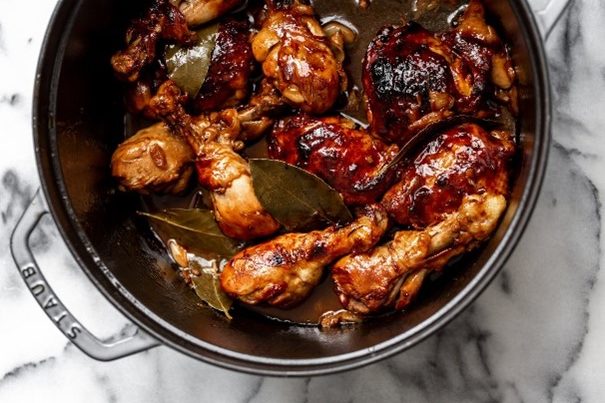
Food
The ultimate Filipino comfort food is chicken (and sometimes pork) adobo. Vinegar, soy sauce and garlic come together to make this flavorful stew that is served with rice. Other popular dishes are: lumpia (think Filipino eggroll), pancit (similar to Lo Mein) and inasal (chicken barbeque on a stick). Rice is also served at every meal – even breakfast! “Filipinos love sweets. Sweets of choice differ depending on the region you are in, but popular favorites are halo-halo (shaved ice with toppings), and rice deserts like suman, kutsinta, puto, bibingka and pitchi pitchi. And lots of coconut,” added Dr. Lagman.
Apart from the usual celebrations like Easter and Christmas, fiestas are celebrations held throughout the year to honor patron saints or to celebrate bountiful harvests. “Filipinos are very happy people, we love to celebrate a lot of things,” shares Dr. Lagman. “During festivities, there is always dancing, singing karaoke, various programs, and lots of food. Fiestas are a time when we open our homes to visitors, even strangers, to eat. There are Filipino community groups in Lancaster and Harrisburg who come together and hold celebrations like our Independence Day celebration in June, though the larger celebration happens in Philly and New Jersey.”
A popular form of transportation is the Jeepney, a leftover nod to when the Americans were in the Philippines, is as it sounds, an elongated Jeep known for crowded seating and eccentric décor.
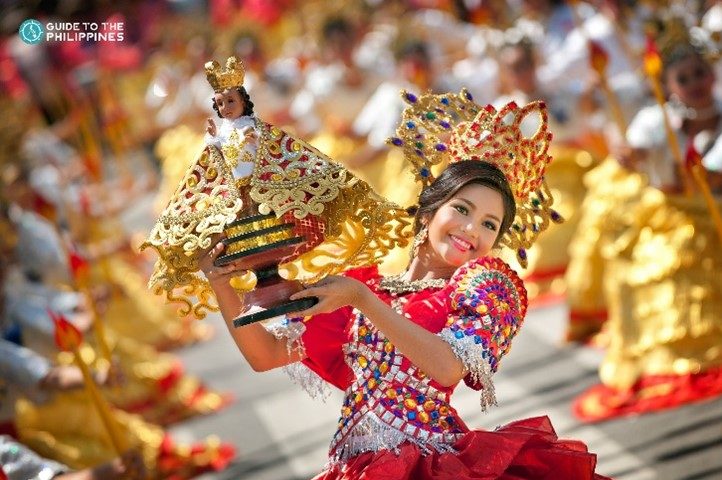

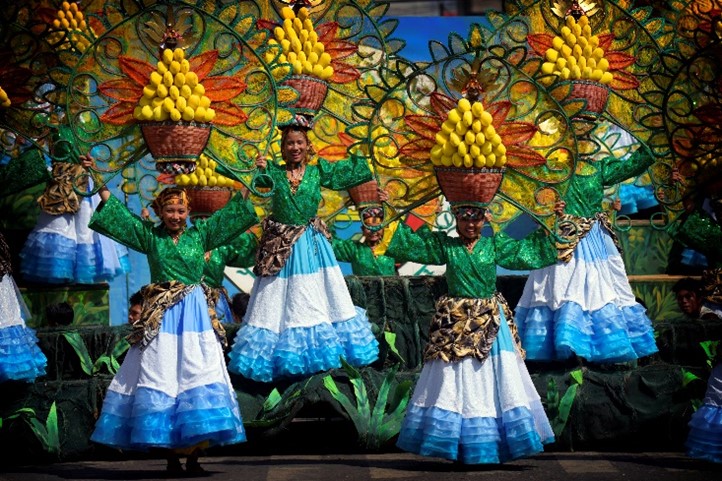
Misconceptions
“Many people know me as Asian, but not necessarily a Filipino. Filipinos don’t usually fit into the common Asian stereotypes that many think of. It’s important to understand that Asia is the largest continent with 48 countries containing several different cultures. The skin color spectrum is wide, we speak different languages, hold differing traditions and our cultures are not the same, religions vary and each person’s experiences in the U.S. are different,” points out Dr. Lagman. “Some come to the U.S. for family, to legally emigrate, to work, have been here for decades due to slavery or come as a refugee.”
Regarding any hate she may have experienced, Dr. Lagman noted, “During Covid, there was a little bit of a scare due to the increase in Asian hate crimes. There is a need for us to continue to educate people to treat each other fairly and justly.”
Impact on Her Work
Filipinos are known to be hard workers, and as such can be sensitive and persistent in their work. In Dr. Lagman’s experience, she saw the difference with harder work schedules and caseloads as a medical student and a pediatric resident in the Philippines. “Coming to U.S. where there are more services, I was able to appreciate being able to give more focus on my patients.”
Dr. Lagman brings her Filipino values of respect and compassion into all her interactions. As a child psychiatrist, families are brought into the discussion, and as a fellow immigrant, she can be more sensitive and understanding with some of the families she sees. Those patients and their families feel more comfortable when they can identify with a provider like Dr. Lagman, with whom English is also a second language.
“I have noticed very few microaggressions understanding that as an immigrant, other parents and patients may see me differently, however with my training in psychiatry, I try not to be too sensitive to it and continue to do the best for the patient. Overall, I’ve had a good experience at PPI.”
“PPI truly tries to be culturally sensitive and caters as much as possible to our patient population. We have interpreters available by phone or in person who not only know the language but also understand the cultural backgrounds. Though I know staffing is always a challenge, it would be nice to have even more therapists and providers from different backgrounds at PPI. In the meantime, it’s great that we can continue to educate ourselves, and can ask other colleagues if we have questions.”
Dr. Lagman is also involved in some Global Mental Health works. Penn State and PPI are supportive of her, allowing her time to work on her projects and giving her mentorship. Currently, she is doing the Project ECHO in the Philippines. “I get to collaborate with psychiatrists, family medicine, pediatric and municipal health officers in the Philippines as well as school guidance counselors and teachers. We discussed cases through tele-mentoring, where we had 60-70 people in attendance, with six more sessions to go.”
This is the first child and adolescent mental health Project ECHO in the Philippines. “My hope is to help improve the management of child mental health by local providers, through tele-mentoring and with the assistance of the local experts in the area. I am so thankful for Penn State and PPI for giving me this avenue,” remarks Dr. Lagman.
Dr. Lagman sees children and adolescents who have mental health issues at PPI’s outpatient and child partial programs.
Visit ppimhs.org or call 866-746-2496, available 24 hours a day, seven days a week, to schedule an appointment.

